11 Nights / 12 Days
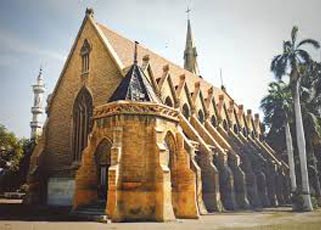
Best Season: From November till February
This designed tour to the archaeological sites in Pakistan clearly proves us the exciting and magnificent heritage of this multi cultural land. To discover the ambiguity, up to date with the up and downs of the Indus Valley Civilization as well as to Gandhara Civilization, travelers to be taken to the places like Harappa and Mohenjo-daro, Taxila & Takht-e-Bhai. Through the Islamic era cities of Multan and southern regions of the Punjab province came to importance when these areas were inhabited by well-known saints & Sufis. Islamic structural design augmented to its peak. Different mausoleums can be seen of saints and holy men here, the tour will also take you to the grand Mughal’s city of Lahore with its great work of art, down to the city of Karachi. One of the more dazzling attributes of the tour will be your visit to Gandhara remnants and its magnificent stupas & viharas.
Arrive at Benazir Bhutto International airport Islamabad. Meet, assist & transfer to the hotel. AM at leisure. PM Islamabad city tour.
Our sightseeing tour will start from, Faisal Mosque, Shakar Parian & National monument with a trip to Damn-e-Koh, to catch an eye bird view of the twin cities.
Dinner & overnight at the hotel. (Lunch & Dinner).
Breakfast at the hotel.
Morning drive to swat en-route visiting Taxila sights and museum.
Taxila is a Tehsil in Rawalpindi District of Punjab province situated just off the Grand Trunk Road about 40 kms northwest of Islamabad the capital city of Pakistan. It is an imperative archaeological site. Taxila accurately claims to be the confluence of the immense civilizations of the world. It came to celebrity when it was under enemy control by Mouriyans, Kushans, Greeks, Scythians and Parthian. Taxila is the region from where Buddhism traveled to the Far Eastand Persians, Greeks and Hindus all later left their mark. View the sun set from the ruins of a Buddhist monastery or stroll all the way through streets of a dug up Persian city in the information that there are two older ones buried underneath. In 1980, Taxila was declared a UNESCO World Heritage Site with many locations. Now it has been given a status as the top tourist destination in Pakistan.
Lunch at the local restaurant. After lunch continue drive to Swat.
Mingora Bazaar is the commercial hub of Swat region and well-worth visiting, there some one will find emeralds for which Swat is well-known. If time permits then continue to Murghazar to visit old white palace constructed from white marble and adorned with ornate carvings.
Dinner & overnight in Swat. (Breakfast, Lunch & Dinner).
After breakfast drive proceed for full day city sightseeing of Swat valley.
The museum in Saidu Sharif has a huge compilation of Gandhara sculptures collected from some of the Buddhist sites in Swat Valley. There are some local embroidery, carved wood, rare coins & tribal jewelary displayed.
Lunch at the hotel.
Butkara ruins are one of the most significant Buddhist places of pilgrimage in the valley. Site is consists of a main stupa around which pushed around 215 votive stupas, in it seems that magnificent disarray. The main stupa was supposed to have some ashes of Lord Buddha built by the Mauryan Emperor Ashoka. One can see still there are statues of lions bend down on their side. They may be fell off the ends of the tall columns which once located close to the stupa.
Dinner & overnight in Swat. (Breakfast, Lunch & Dinner).
Breakfast at the hotel. Morning Visit remaining sights Nimogram/Udegram of Swat valley.
Nimogran is exclusive Buddhist site and has three main stupas, one for each of the three principles of Buddhism, the Buddha as teacher, Dharma (The Buddhist doctrine), and Sangha (the Buddhist order). Adjoining the main stupas is 54 votive stupas, and near by unexplored monastery site. Some of the excellent statues found at Nimogram are now in the Swat Museum at Saidu Sharif. While traveling from Chakdara towards Saidu Sharif, one reaches Landakai. About 7 km from here, a road lead towards Nimogram, which is further 21 km away. A Buddhist monastery is located here on the top of a small hill, giving an overall view of the area. There are three main stupas, encircled by a number of small votive stupas. Dressed stones have been used in the building and bear resemblance to Andan Dheri monastery.
Lunch at the hotel.
Udegram is located 8 kilometers from Saidu Sharif. A city where Alexander fought one of his battles. Italians dug up this site in 1950’s. This site was occupied from 1000 BC to 14th century AD. During the Hindu Shahi era from 8th century to 10th century this was the regional capital of Swat. Remains of Raja Gira’s Fort, the last Hindu ruler were dug up by the Italians in 1950’s. The first mosque built in Swat was discovered in 1985 below the Hindu Shahi Fort in 1985.
Dinner & overnight in Swat. (Breakfast, Lunch & Dinner).
Breakfast at the hotel. Morning drive to Peshawar, en-route visiting Takht-e-Bhai.
Takht-e-Bhai is a Buddhist site which is situated in Northwest of Mardan on the road to Swat. It is the most inspiring and complete site in Pakistan. The main construction of the Takht-e-Bhai compound is the monastery and stupas founded in the 1st century AD & left un-used in the 6th century. Surrounding the monastery on the point on top of it are the remains of private houses, some of them are the three storeys high. The name of Takht-e-Bhai means the hill of springs. There is considerable proof to prove that during the Buddhist period there were lots of springs on the hill here which have now dried up around 200 AD. When Raja Varata was the King of Gandhara, Takht-e-Bhai was the capital of the Kingdom of the era. The stupas on the site were found to contain square court bounded by a series of cells which accommodates the images.
After lunch in a local restaurant. Continue drive to Peshawar.
Dinner & overnight in Peshawar. (Breakfast, Lunch & Dinner).
After early breakfast proceed for half day tour of Peshawar Museum, Mohabat Khan Mosque.
Peshawar is the capital of Khyber-Pukhtunkhwa and the business & administrative center and central economic hub for the Federally Administered Tribal Areas of Pakistan. Peshawar has changed into one of Pakistan’s most ethnically, linguistically, and religiously diverse cities. In the last three decades, there has been a major increase in urban inhabitants, in part due to internal resettlement of the people to seek better employment opportunities, education & services and in part because of the entry of Afghan refugees and other people displaced by military operations and civil unrest in adjacent regions. Peshawar is the major educational, political center of Khyber Pukhtunkhwa.
Lunch in a local restaurant.
PM. Drive to Lahore. Arrive and transfer to the hotel.
Dinner & overnight in Lahore. (Breakfast, Lunch & Dinner).
After breakfast proceed for full day sightseeing of Lahore including Lahore fort, Museum,
Badshahi Mosque, Shalimar Gardens, Jahangir’s Tomb, Wazir Khan Mosque.
Lahore is the capital of Punjab Province of Pakistan and 2nd largest city in the country was the seat of power in northern subcontinent for almost 1000 years. With a rich and marvelous history dating back to over a thousand years ago, Lahore is no doubt Pakistan’s cultural capital. One of the most compactly inhabited cities in the world, Lahore remains a vivacious economic, political, transportation, amusement, and educational hub. Lahore preserves its historical rank as one of the world’s most multinational and vigorous of cities. Lahore has been a center of cultural heritage for many civilizations. It witnessed the rise and fall of different invaded reign and absorbed the cultural festivities of all invaders into its own and assumed the role of the cultural capital of Pakistan.
Lahore was the cultural hub of the northern part of the subcontinent which widens from the eastern banks of the Indus River to New Delhi. Mughal structures such as the Badshahi Mosque, Mausoleum of Allama Iqbal, the Lahore Fort, Shalimar Gardens, and the mausoleum of Jehangir and Noor Jahan are popular tourist attractions for the city. Lahore is also home to many British colonial structures built in the Mughal-Gothic style, such as the Lahore High Court, the General Post Office, Lahore Museum and many older universities including the University of the Punjab.
Lunch at the hotel.
Lahore is referred to as the cultural heart of Punjab as it hosts most of the arts, cuisine, festivals, film-making, music, gardening and intelligentsia of the country. Known for its affiliation with poets and artists, it has the largest number of educational institutions in Punjab and some of the finest gardens in the continent. It is also an important religious center as it is home to hundreds of temples, mosques, and shrines like Data Durbar Complex & Wazir Khan Mosque. Minar-e-Pakistan is a tall minaret in Iqbal Park Lahore, built in the honor of the Lahore declaration. The minaret reflects a mix of Mughal and modern structural design, and is built on the location where on March 23, 1940, seven years before the formation of Pakistan; the Muslim League passed the Pakistan Resolution.
Dinner & overnight at the hotel. (Breakfast, Lunch & Dinner)
Breakfast at the hotel. Morning drive to Multan via Harappa.
Harappa is an archaeological spot in Punjab, Pakistan, about 35 km west of Sahiwal. The site takes its name from a modern village situated near the former route of the Ravi River. The present village of Harappa is 6 km from the very old site. Although modern Harappa has a train station left from the British times, it is now a days just a tiny (population. 15,000) junction town. The site of the very old city contains the wreckages of a Bronze Age equipped city, which was part of the Cemetery H culture and the Indus Valley Civilization, centered in Sindh and the Punjab. The city is supposed to have had as many as 23,500 inhabitants and considered huge for its time. The ancient city of Harappa was very much damaged under the British rule, when bricks from the remains were used as track ballast in the construction of the Lahore-Multan Rail Road. In 2005, a notorious amusement park plan at the site was neglected when builders discovered many archaeological works of arts in the early stages of construction work.
Lunch in a local restaurant.
Continue drive to Multan. Arrive and transfer to the hotel. PM. Short city tour of Multan.
Go through the prolific vicinity of Multan by having a glance of the attractive shrines which are the master work of the Islamic structural design. The walls of these shrines are creatively decorated with the prominent work of art (traditional Islamic art) while the ceiling has been fixed with pieces of precious stones, mirror glass and the floors are laid with colorful tiles. During the city tour you will visit the embroidery market, tomb of Rukn-e-Alam, tomb of Bahauddin Zikria and some other places. The tomb of Rukn-e-Alam which was constructed between 1320 -1324 is a matchless pre-Mughal work of art. Brick, stonework and woodwork used in building in which walls lean forward to hold the impressive structural design of the dome. A Tughlaq King had built it as his last resting place. But God’s will was such that it became the last resting place of a saint. Tomb has been built on a hill over Multan which commands the city and its people.
Dinner & overnight in Multan. (Breakfast, Lunch & Dinner)
Breakfast at the hotel.
Drive to Sukkur. On the way lunch in a local restaurant.
Continue drive to Sukkur. Arrive and transfer to the hotel.
Sukkur is a district and is the third largest city of Sindh province, located on the west bank of Indus River in Pakistan. The word Sakharu means (superior) in Sindhi language. Sukkur is nicknamed Darya Dino, meaning the gift of river, as without the Indus the city would be a desert. People of Sukkur speak Sindhi, Sukkur district shares its northern border with Shikarpur and the recently constituted Kashmore districts. Ghotki is located on the north-eastern side while Khairpur on the south. The border with India lies further east. Sukkur is also connected by road and by air with all major cities of Pakistan.
The Sukkur barrage (formally called Lloyd Barrage) has 66 gates, built under the British Raj on the Indus River, controls one of the largest irrigation systems in the world. It was designed by Sir Arnold Musto KCIE, and built under the overall direction of Sir Charlton Harrison, KCIE, as Chief Engineer. Construction of the barrage was initiated in 1923 and completed in January 1932. The 5,001 ft long barrage is made of yellow stone and steel and can water nearly 10 million acres (40,000 km2) of farm land from end to end its seven large canals. Some of the canals are larger than the Suez Canal.
Dinner & overnight in Sukkur. (Breakfast, Lunch & Dinner).
After breakfast proceed for full day Mohenjo-daro excursion.
Mohenjo-daro is located in the Larkana District of Sindh, Pakistan, on an edge in the middle of the flood plain of the Indus River Valley, around 28 kilometers from Larkana city. The edge was well-known during the time of the Indus Valley Civilization, allowing the city to position on top of the nearby area, but the flooding of the river has since buried most of the ridge put down the silt. Mohenjo-daro is an archeological site situated in what is now the province of Sindh, Pakistan. Built around 2600 BC, it was one of the biggest settlements of the very old Indus Valley Civilization, and one of the world’s earliest major urban settlements, existing at the same time as the civilizations of ancient Egypt, Mesopotamia, and Crete. Mohenjo-daro was abandoned in the 19th century BC, and was not re-discover until 1922. Important excavation work has been conducted at the site of the city, which was designated a UNESCO World Heritage Site in 1980.
Mohenjo-daro was built around 2600 BC and abandoned around 1800 BC. The ruins of the city were re-discovered after 1922 by Rakhaldas Bandyopadhyay, an officer of the Archaeological Survey of India. He was led to the mound by a Buddhist monk, who believed it to be a stupa. In the 1930s, major excavations were made under the leadership of John Marshall, K. N. Dikshit, Ernest Mackay, and others. Further excavations were carried out in 1945 by Ahmad Hasan Dani and Mortimer Wheeler. Mohenjo-daro has a designed layout based on a street network of rectilinear buildings. Most were built of fired and mortared brick; some included sun-dried mud-brick & wooden wonderful structures. The pure size of the city, and its provision of public buildings and amenities, suggests a high level of communal organization. At its boom of development, Mohenjo-daro could have houses around 35,000 residents.
Lunch in a local restaurant.
In the afternoon drive back to Sukkur to catch evening flight for Karachi by PK-.
Or Evening transfer to Mohenjo-daro airport for flight to Karachi by PK-.
Arrive in Karachi and transfer to the hotel.
Karachi is locally known as the (City of Lights) & (The bride of the cities) for its spirit, and the (City of the Quaid) , having been the birth and burial place of Quaid-i-Azam (Muhammad Ali Jinnah), the founder of Pakistan, who made the city his abode after Pakistan’s independence from the British Raj on 14 August 1947. Karachi is the largest city, main seaport and the main business hub of Pakistan, as well as the capital of Sindh province. The city is located in the south of the country, along the seashore meeting the Arabian Sea. It is spread over 3,527 km2 in area, almost four times bigger than Hong Kong. It was the original capital of Pakistan until the construction of Islamabad and is the place of the Port of Karachi and Port Bin Qasim, two of the region’s main and busiest ports. After the freedom of Pakistan, the city population enlarged severely when hundreds of thousands of Muhajirs from India and other parts of South Asia came to settle in Karachi.
Dinner & overnight in Karachi. (Breakfast, Lunch & Dinner).
Breakfast at the hotel. Proceed for full day excursion to Thatta.
Thatta’s main monuments particularly its graveyard at Makli is listed with the World Heritage Sites. The Shah Jahan Mosque is also listed separately on the tentative list since 1993. Located 98 kms east of the provincial capital of Sindh Karachi, it makes for a practical escape for people from the city looking for to visit the charming old town. Thatta may be the place of ancient Patala, the main port on the Indus in the time of Alexander the Great. Situation has caused the Indus to change its route many times since the days of Alexander, and the site of Patala has been subject to much imagined. Thatta’s monuments include the Jama Mosque (Shah Jahan Mosque and Badshahi Mosque), built by Shah Jahan in 1647-49 and lined with glazed tiles. This structure has 101 domes and is designed in such a way that imam’s voice can reach every corner of this building without the help of any loudspeaker or other device.
Lunch at a local restaurant.
The huge graves are made of hard rock and the mausoleums of the sun baked brick with different kinds of Quranic verses imprinted on them. This mosque was built on the orders of Shah Jahan, for the people of Thatta because they welcomed him with open hearts when his father died. The Shah Jahan Mosque is a great example of highly defined tile work. In total this mosque has 33 arches and 93 domes which are of different sizes which add the taste to its beauty. White and Blue tiles of bright touch have been put together in such a style that it looks like a beautiful mosaic.
Return to Karachi and transfer to the hotel.
Dinner & overnight in Karachi. (Breakfast, Lunch & Dinner).
Breakfast at the hotel.
AM. Transfer to Jinnah International terminal Karachi for home bound flight. (Breakfast only).
SERVICES END
Traveling to different locations across Pakistan will help you in learning about some of the undiscovered places and new cultures. Moreover, taking a vacation always help you in escaping the monotonous routine. If you are planning a tour to any location in Pakistan, then come directly to us for the best travel solutions. Adventure Kings Travels & Tours is one of the prominent travel agencies that are actively involved in rendering reliable solutions for all travel requirements. Mr. Mujeeb Ullah Khan (Owner) laid the foundation stone of the company in the year 2012 with a motive to organize dream vacations for our clients. Read More...

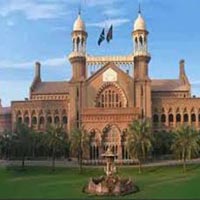 7D/6N
7D/6N
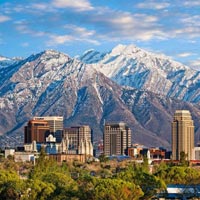 16D/15N
16D/15N
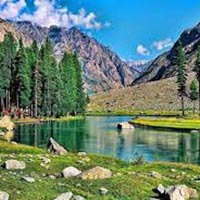 10D/9N
10D/9N
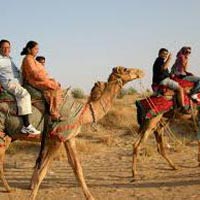 12D/11N
12D/11N
Camel Safari in Rajasthan Tour
New Delhi - Jodhpur - Jaisalmer - Ranakpur - Udaipur
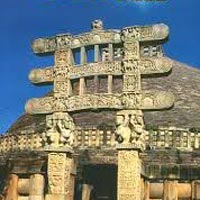 12D/11N
12D/11N
Back to Madhya Pradesh Tour (Central Ind..
Gwalior - Jhansi - Jabalpur - Bhopal - Tikamgarh - Chhatarpur - Kanha - Pachmarhi
 12D/11N
12D/11N
 12D/11N
12D/11N
Chardham Yatra (Ex Delhi) 11 Nights / 12..
Haridwar - Garhwal - Uttarkashi - Rudraprayag - Chamoli - Rishikesh
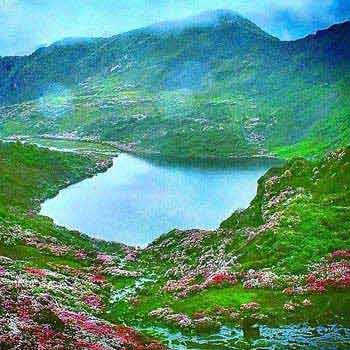 12D/11N
12D/11N
Guwahati - Kaziranga - Shillong - Tawang - Cherrapunji - Bomdila - Bhalukpong
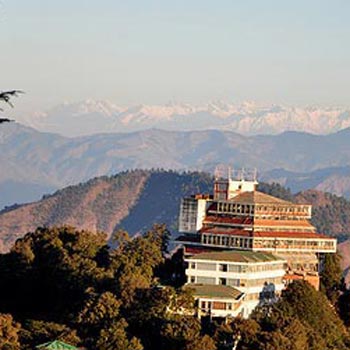 12D/11N
12D/11N
11nights/12days Himachal Punjab Romantic..
Chandigarh City - Shimla - Manali - Dharamshala - Dalhousie - Amritsar - Ludhiana -..
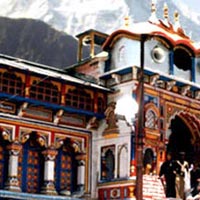 12D/11N
12D/11N
Haridwar - Rishikesh - Uttarkashi - Rudraprayag - Chamoli - Joshimath - Srinagar - ..
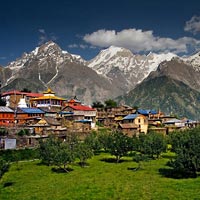 12D/11N
12D/11N
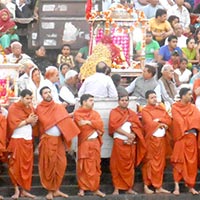 12D/11N
12D/11N
Haridwar - Rudraprayag - Rishikesh - Uttarkashi - Chamoli - Gangotri
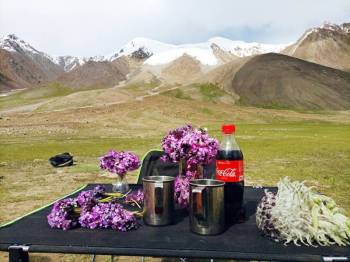 14D/13N
14D/13N
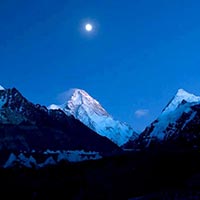 16D/15N
16D/15N
 10D/9N
10D/9N
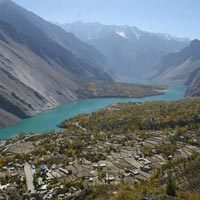 8D/7N
8D/7N
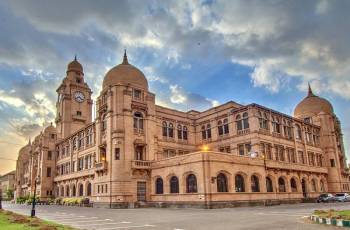 4D/3N
4D/3N
 7D/6N
7D/6N
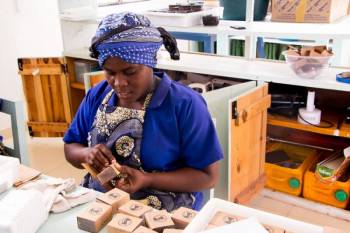 4 Hours
4 Hours
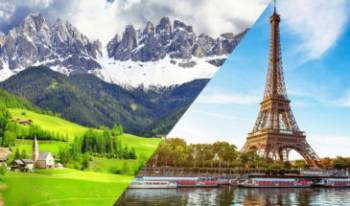 9D/8N
9D/8N
Lucerne - Interlaken - Zanzibar - Islamabad - Besham Qila - Dhaka - Mongla
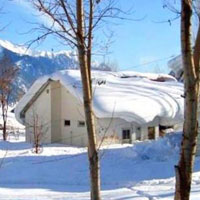 7D/6N
7D/6N